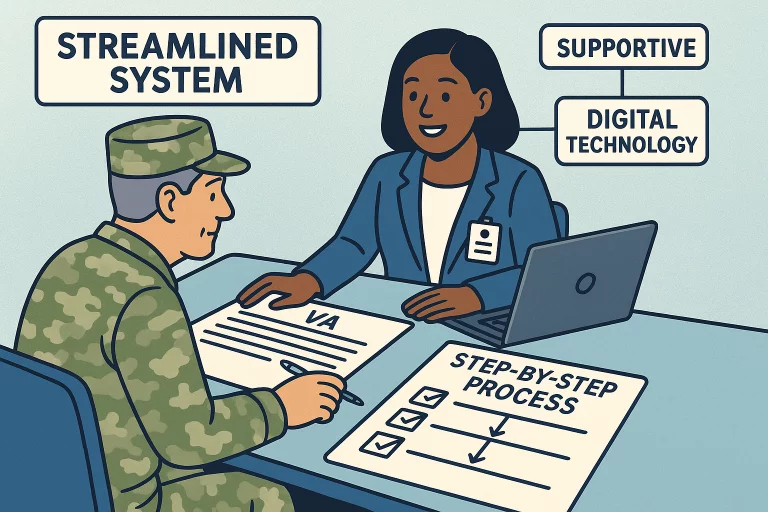Lifestyle
Simplifying Disability Benefits Paperwork for Veterans

Key Takeaways
- Recent legislative efforts aim to simplify VA forms, reducing confusion and processing times.
- Technological advancements, including automation, are being implemented to expedite the claims processing process.
- Collaboration between government agencies and veteran organizations is crucial for effective reform.
Veterans are facing a transformative wave of reforms and technological innovations aimed at simplifying the process of applying for disability benefits. These reforms utilize plain, accessible language and advanced technologies to automate key steps in claims administration. The Department of Veterans Affairs and federal agencies are committed to breaking down barriers that have long plagued the benefits system. By combining regulatory changes with next-generation digital platforms and fostering partnerships across agencies and advocacy organizations, these reforms are transforming the way veterans interact with the benefits system, ensuring they receive the assistance they need without confusion or frustrating delays.
Legislative Efforts to Simplify Forms
The Clear Communication for Veterans Claims Act, introduced by Congresswoman Nikki Budzinski and fellow lawmakers in February 2025, encourages veterans to increase your VA disability claim with accurate documentation by improving communication. The legislation aims to overhaul the VA’s communication with veterans by introducing clear, concise language and empowering them to make decisions without relying on third-party experts. The legislation also mandates regular reviews and updates to the form design and language, collecting ongoing input from veterans and their organizations. This feedback loop ensures that improvements remain relevant and responsive to users’ experiences, making the system more reliable, less intimidating, and truly veteran-centric.
Technological Advancements in Claims Processing
The VA is modernizing the claims process by embracing Robotic Process Automation (RPA), which automates repetitive tasks such as data collection, verification, and cross-referencing records. This accelerates case movement and reduces the risk of human error. RPA solutions currently process over 1,000 claims per day, and as the technology is scaled up, it is expected to increase, cutting wait times for veterans. Benefits of automation include reduced delays, faster response times, and administrative relief for claims agents. As these systems advance, veterans can expect faster processing speeds and fewer headaches during stressful seasons. As AI advances, automation is likely to expand from basic sorting and verification to more nuanced decision support, assisting human adjudicators while maintaining high accuracy standards and reliability.
Collaboration with Research Entities
Developing clearer, more user-friendly forms requires insight from professionals skilled in human-centered design and communication science. Recognizing this, lawmakers have mandated that the VA engage in partnerships with federally funded research and development centers (FFRDCs) through the Simplifying Forms for Veterans Claims Act. External researchers provide an objective perspective and up-to-date best practices from government and industry. They conduct thorough reviews of language, form structure, flow, and usability, applying research on accessibility and cognitive load. They pilot test changes with veterans, ensuring logical organization and clear instructions. This rigorous collaboration ensures reforms lead to genuine, practical improvements, not just superficial tweaks.
Modernizing the Disability Claims Process
The VA aims to create a digital-first experience for veterans, from their initial inquiry to final decision. This includes comprehensive online portals for filing claims, submitting documents, and tracking progress in real-time. Key modernization elements include integrated help resources, such as live chat and searchable online knowledge bases, as well as secure, centralized communication. This shift from a reactive to a proactive service model reduces delays, stress, and confusion associated with the disability claims journey. The upgrades also enable the VA to be more responsive to future challenges and adapt quickly to meet veterans’ evolving needs.
Social Security Administration’s Initiatives
The Social Security Administration (SSA) is implementing a streamlined online Supplemental Security Income (SSI) application process, mirroring VA reforms. The goal is to create a digital infrastructure that can be accessed from anywhere, reducing visits to SSA offices, reducing paperwork errors, and making the process less intimidating. This harmonization of federal systems will result in less duplicated paperwork, fewer misunderstandings, and greater access to all available support services for veterans coordinating VA disability and SSI benefits.
Impact on Veterans and Their Families
The reforms aimed at veterans and their families include legislative language, technological solutions, research partnerships, and cross-agency cooperation. These reforms aim to improve veterans’ lives by streamlining forms, automating processes, and providing clearer guidance. This will reduce misunderstandings and mistakes, allowing veterans to focus on their health, recovery, and reintegration. The movement is about respect, dignity, and service, recognizing the sacrifices made by veterans and setting new standards for government interaction with them.
